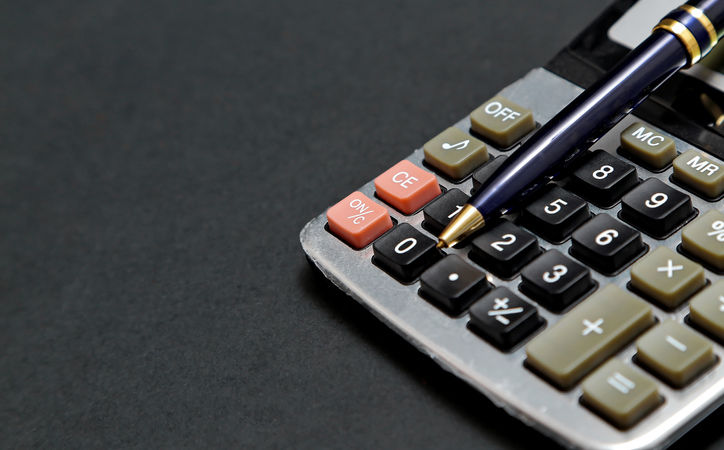Learn to gather and record lease-related data properly.
Jump to:
| What is needed to record lease liability? |
| How do you calculate the lease liability? |
| What is needed to calculate the right-of-use asset? |
| How do you calculate the right-of-use asset? |
| Putting it all together to record lease liability and right-of-use asset |
| Lease liability reminders |
Under the ASC 842 lease standard, almost all leases are recorded on the balance sheet. This requirement often leads to questions like:
At which amount do we record the lease liability? At which amount do we record the lease asset?
The most challenging aspect of documenting the lease liability and right-of-use asset involves data collection. Prior to recording the lease liability, it is essential to verify the accuracy of the lease term, the lease payment, and ensure that the discount rate is based on reliable data. Similarly, before recording the right-of-use asset, it is important to make necessary adjustments for initial direct costs, prepayments, and lease incentives.
Once this data is in hand, the process of combining it is straightforward. Let’s take a step-by-step look at how to record the lease liability and corresponding right-of-use asset.
What is needed to record lease liability?
In order to record the lease liability on the balance sheet, we need to know these 3 factors:
- Determine the lease term. Determining the lease term sometimes requires judgment, particularly when we have renewal and termination options as part of the lease agreement.
- Verify the lease payment. Determining the lease payment also requires judgment in some cases, for example, when there are payments related to renewal or termination options.
- Know the discount rate that will be used to discount the lease liability. If we are using the incremental borrowing rate, we have to make sure the inputs that go into calculating the rate are reliable.
All three of these inputs are needed to record the lease liability. Now, let’s figure out how to put it all together.
How do you calculate the lease liability?
The lease liability represents the obligation to make lease payments and is measured at the present value of future lease payments.
Once we have gathered our information (i.e., we know the lease term, the lease payment, and the discount rate), we simply discount the liability over the lease term, using the discount rate. We then record the lease liability, or the resulting amount, on the balance sheet. Then, we record the lease asset.
Let’s continue reading to determine what additional steps we need to take.
What is needed to calculate the right-of-use asset?
The right-of-use asset (ROU asset) is an intangible asset and we are recording the right to use the asset (for example, the right to use a truck) instead of the actual asset itself.
There are three items that we need to consider before we can arrive at the correct amount for the right-of-use asset:
- Initial direct costs (incurred by the lessee)
- Lease incentives (received by the lessee)
- Lease prepayments (made by the lessee)
Initial direct costs
Initial direct costs are defined as follows:
Incremental costs of a lease that would not have been incurred if the lease had not been obtained.
For example, payments made to a lawyer to obtain tax or legal advice would most likely not be an initial direct cost.
On the other hand, a payment made to a broker as commission would most likely be an initial direct cost as that payment would only be made if the lease had been obtained.
Likewise, a payment made to an existing tenant as an incentive to terminate the lease would likely be an initial direct cost (again, this cost would be incurred only if the lease had been obtained).
Lease incentives and prepayments
A lessor may provide an incentive to a prospective tenant to induce them to sign a lease. This is known as a lease incentive and may be provided in the form of an up-front cash payment, a payment of the lessee’s costs (i.e., moving expenses) or the assumption of the lessee’s preexisting lease, etc.
Lease prepayments are simply payments made in advance.
How do you calculate the right-of-use asset?
Now that we have all the pieces of the puzzle, let’s calculate our right-of-use asset. We begin with the lease liability. Here is the formula:
Right-of-use asset:
= Lease Liability
+ Initial Direct Costs
+ Prepayments
– Lease Incentives
Putting it all together to record lease liability and right-of-use asset
Let’s put it all together by looking at an example. Assume the following:
- Six-year lease with no renewal options
- $40,000 lease payment, paid at the end of each year
- Rate is 9% (incremental borrowing rate)
- Initial direct costs equal $1,000
We begin by calculating the lease liability as follows:
- The lease liability will be recorded as the present value of the six payments, discounted at 9%,
- Therefore, the lease liability would equal $179,437
Next, we calculate the right-of-use asset as follows:
- The right of use asset will be recorded as the lease liability plus initial direct costs plus prepayments less any lease incentives
- Therefore, the right-of-use asset would be calculated as $179,437 (lease liability) +1,000 (lease incentives) = $180,437 (Note there are no prepayments or lease incentives in this example)
The journal entry would be:
Right-of-use asset $180,437
Lease liability $179,437
Cash $1,000
Lease liability reminders
The trickiest part of recording the lease liability and right-of-use asset is gathering the data.
Before we record the lease liability, we should make sure we have the correct figures for the lease term and lease payment and that the discount rate was generated using reliable data.
Before we record the right-of-use asset, we should make sure we are making the appropriate adjustments for initial direct costs, prepayments and lease incentives.
Once we have all the data, putting it all together should be a cinch!
For more information on leases, watch our free on-demand webcast for an overview of the ASC 842 lease standard. Emphasis includes areas such as lease definition, lease classification, balance sheet presentation, transition, lease term, lease payment, lessee accounting, implementation considerations and disclosure requirements. The discussion includes illustrative examples and demonstrations.
Webinar |












